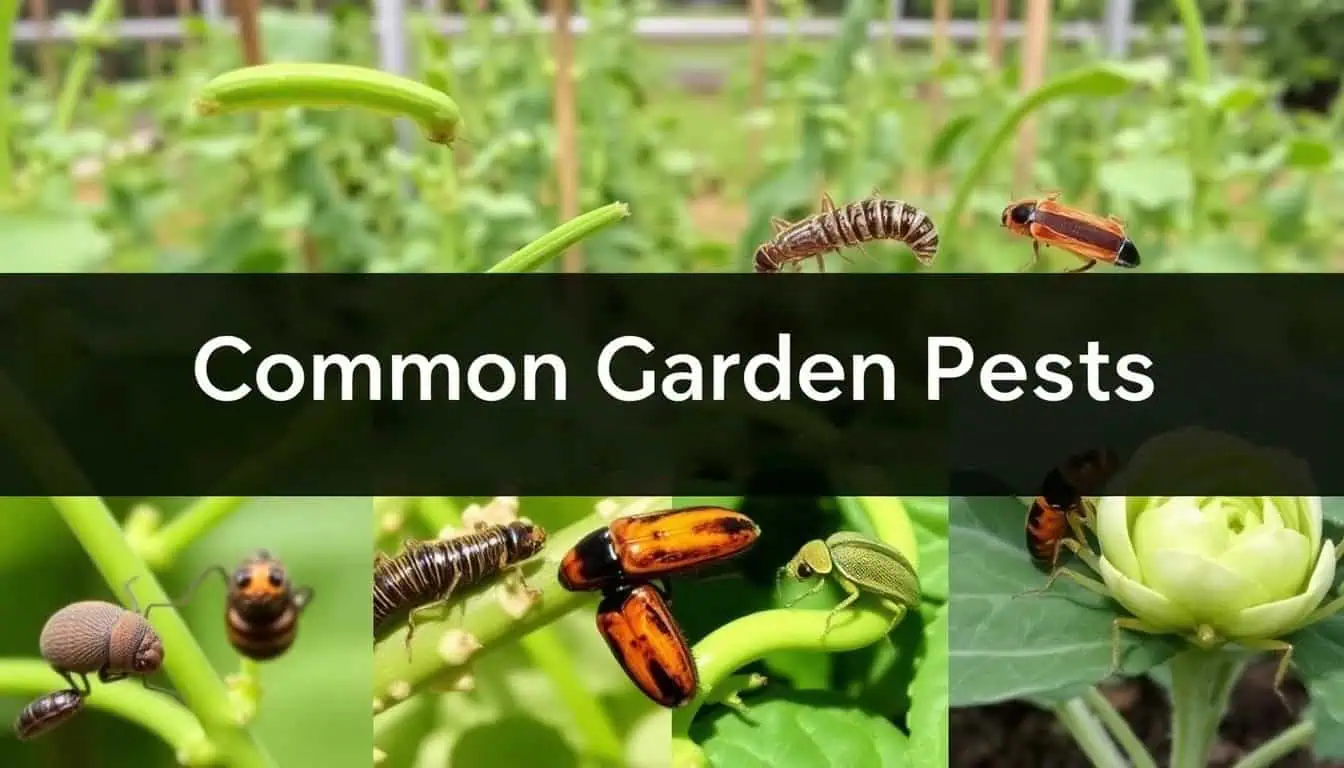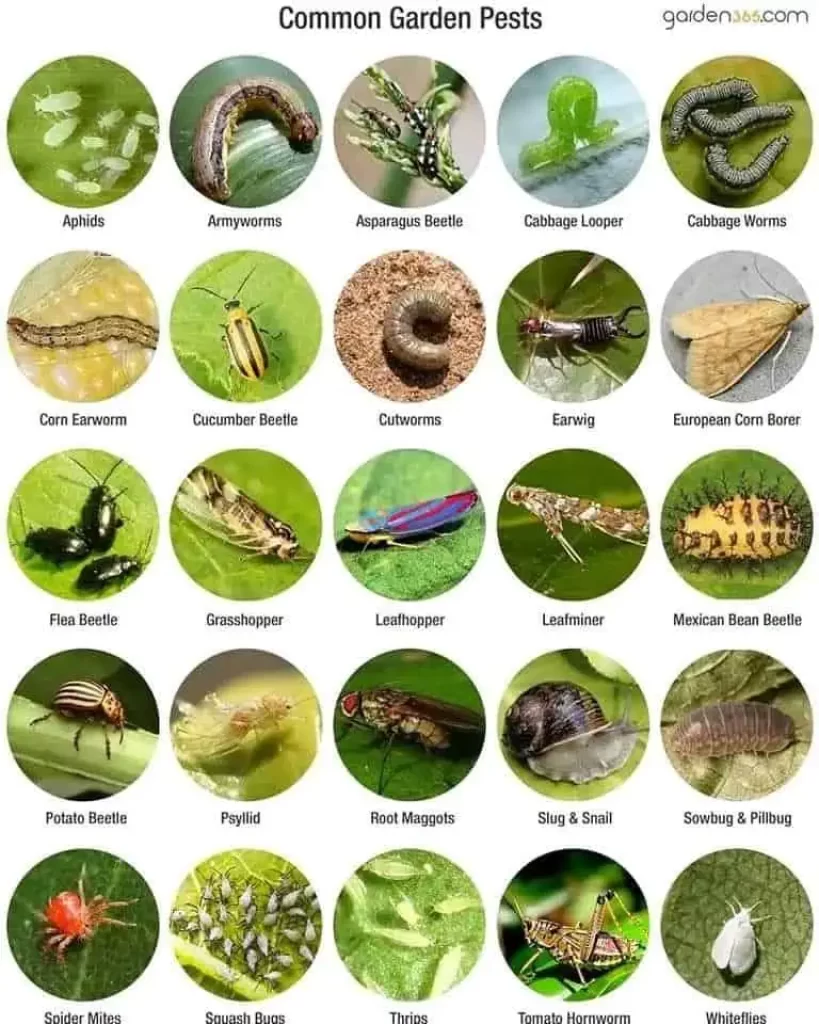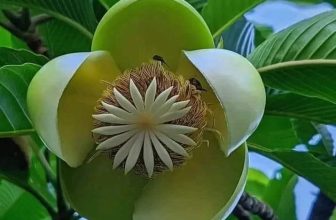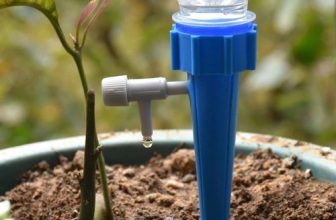
Gardening can be a rewarding hobby, but it’s not without its challenges. One of the most significant hurdles gardeners face is dealing with pests that can damage plants and reduce yields. Below is a guide to some common garden pests, their behaviors, and potential control strategies.

1. Aphids
Aphids are small, sap-sucking insects that can weaken plants by feeding on their juices. They often gather in large numbers on new plant growth.
2. Armyworms
Armyworms are caterpillars that consume large amounts of foliage, often moving in groups that resemble an army, hence their name.
3. Asparagus Beetle
These beetles target asparagus plants, causing damage to the foliage and spears by feeding on them.
4. Cabbage Looper
Cabbage loopers are caterpillars known for chewing large holes in the leaves of cabbage and related plants.
5. Cabbage Worms
These green caterpillars feed on the leaves of cabbage and other cruciferous plants, leaving significant damage behind.
6. Corn Earworm
Corn earworms attack the tips of corn ears and can also infest fruits and vegetables, leading to substantial crop losses.
7. Cucumber Beetle
These pests feed on cucumbers and other cucurbits and can transmit diseases like bacterial wilt, affecting plant health.
8. Cutworms
Cutworms are caterpillars that cut down young plants at their base, often during the night, which can be devastating to seedlings.
9. Earwigs
Earwigs feed on a variety of plant leaves, flowers, and fruits, sometimes causing noticeable damage.
10. European Corn Borer
The larvae of this moth bore into corn stalks, causing severe damage and reducing yield.
11. Flea Beetle
Flea beetles are small beetles that jump like fleas and chew small holes in leaves, impacting plant growth.
12. Grasshopper
Grasshoppers are large insects that consume a wide variety of plants, sometimes leading to severe damage.
13. Leafhopper
Leafhoppers suck sap from plants, which can weaken them and potentially spread diseases.
14. Leafminer
These larvae tunnel into leaves, creating visible trails or blotches that affect photosynthesis.
15. Mexican Bean Beetle
These pests feed on bean plants, causing skeletonization of the leaves and reducing plant vigor.
16. Potato Beetle
Potato beetles primarily target potato plants, causing extensive damage to foliage.
17. Psyllid
Psyllids are small, sap-sucking insects that can stunt plant growth and spread diseases.
18. Root Maggots
Root maggots feed on plant roots, causing wilting and potentially leading to plant death.
19. Slug & Snail
These mollusks feed on plant leaves and stems, often leaving a telltale slime trail behind.
20. Sowbug & Pillbug
Sowbugs and pillbugs feed on decaying plant material and sometimes seedlings, impacting plant health.
21. Spider Mites
Spider mites are tiny arachnids that suck plant juices, often causing stippling or discoloration on leaves.
22. Squash Bugs
Squash bugs feed on squash plants, damaging leaves and vines, which can lead to reduced yields.
23. Thrips
Thrips are tiny insects that feed on plant sap, often leaving silver streaks on foliage as a result of their feeding.
24. Tomato Hornworm
These large caterpillars defoliate tomato plants and can severely impact their productivity.
25. Whiteflies
Whiteflies are small white flying insects that suck sap from plants and can spread diseases between them.
Managing Garden Pests
Controlling these pests can involve a variety of strategies:
- Natural Predators: Introducing beneficial insects like ladybugs or lacewings can help control pest populations.
- Organic Sprays: Neem oil or insecticidal soaps can be effective against many soft-bodied insects.
- Integrated Pest Management (IPM): Combining cultural practices, biological control, mechanical methods, and chemical means to manage pest populations sustainably.
By understanding these common garden enemies and implementing effective control measures, you can protect your garden and enjoy a bountiful harvest.





